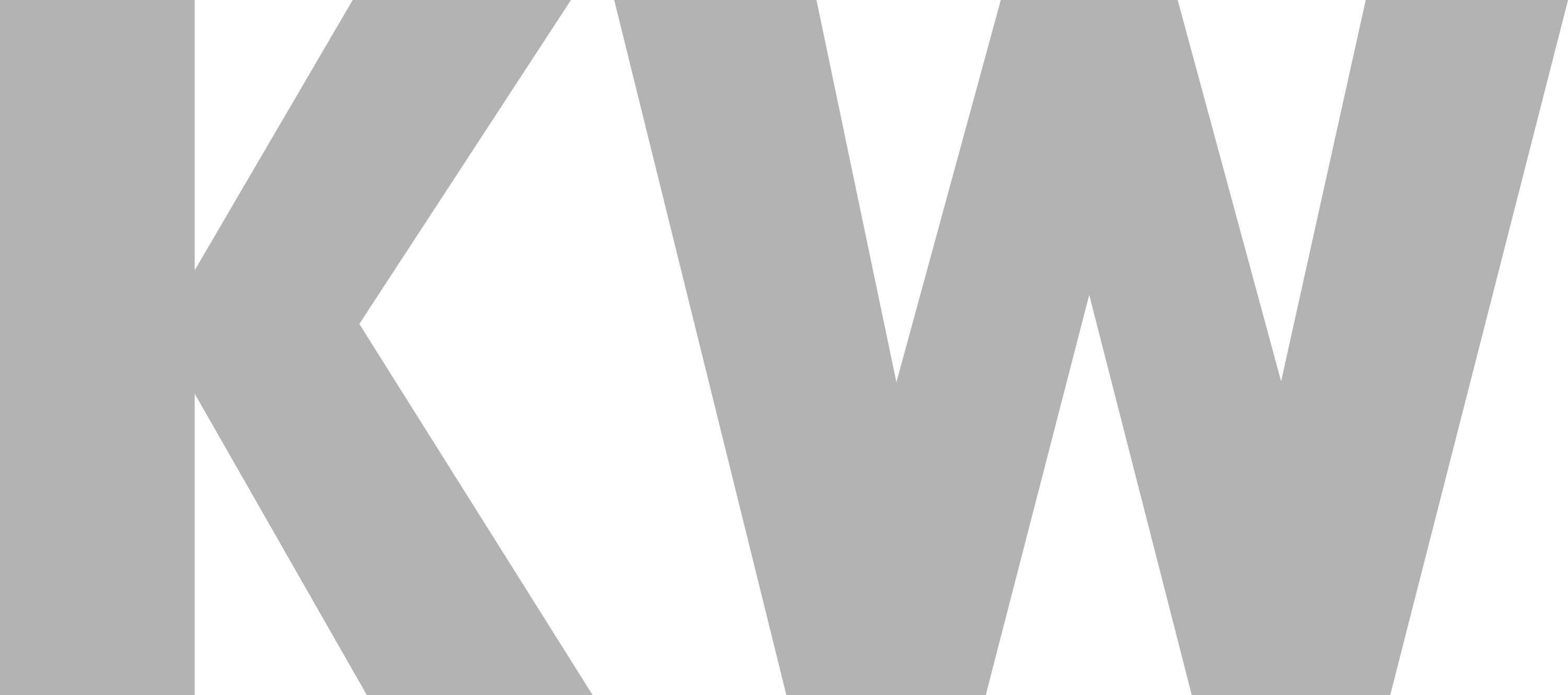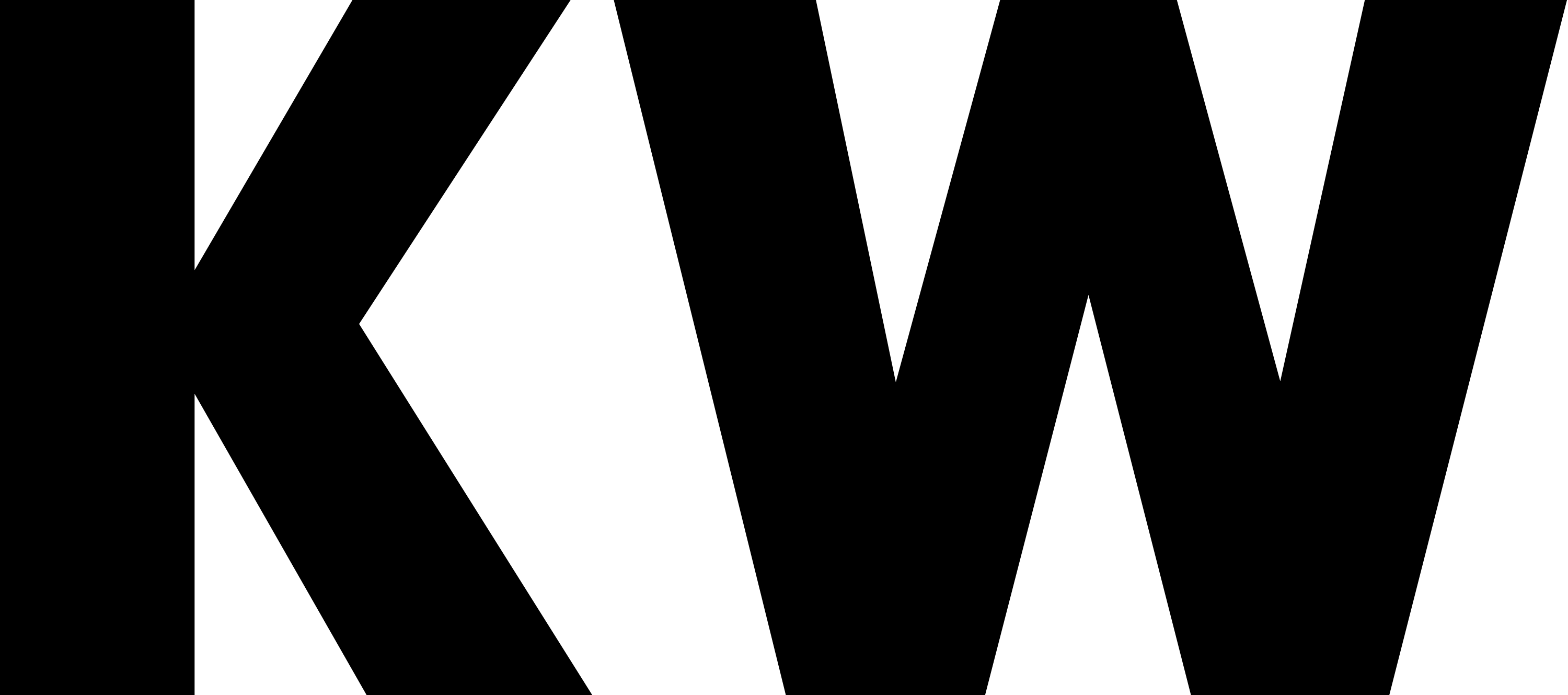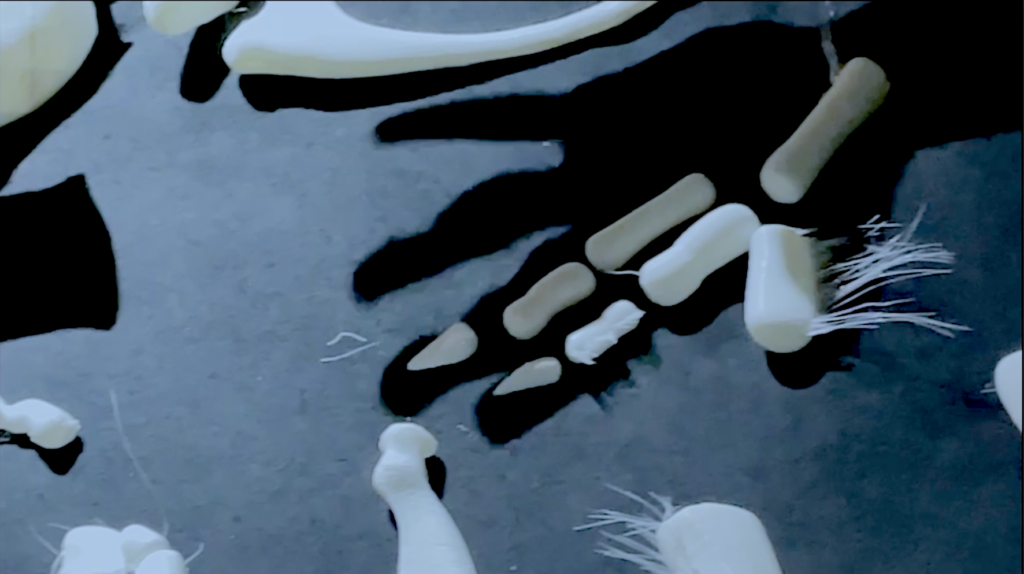Curatorial Text
KW Production Series:
Emily Wardill
Identical
10 June – 20 August 23
Curator: Mason Leaver-Yap
Assistant Curator: Linda Franken
KW Studio about Emily Wardill with Mason Leaver-Yap and Linda Franken. Production: LOCOLOR, Realisation & Producer: Vincent Schaack, Camera: Vincent Schaack, Adrian Nehm, Alejandro Mancera, Editing & Color Grading: Lia Valero
The opening seconds of Emily Wardill’s film Identical (2023) are simple and elemental: the seductive play of light on water. Or, put another way, the film begins by depicting the moment where one thing bends, reflects and distorts another – and is seen differently as a consequence. This jewel-like mirage is doubled across a second screen. Initially, each image appears indistinguishable from the other, until the light shifts focus – from water to solid, from abstraction to figuration – to reveal a body turning, glittering, becoming different. This hypnotic introductory sequence punctuates Identical several times, and directly communicates what this installation is about: splits and expansions, and how shifting representations affect one’s ability to comprehend what is taking place.
Emily Wardill, Identical, 2023, video installation. Courtesy Carlier Gebauer
As with the genesis of all cellular life, ‘splitting’ is never just one thing. In Identical, the separation of one thing from another is potentially duplicitous on a social, historical and cultural level. As the double-channel installation unfolds over 16 minutes, there is a haunting feeling – ‘in the bones’, one might say – that is something isn’t quite right. Indeed, Wardill describes Identical as a work full of dupes, seductions, gaslighting, and disorientations. It dominates the senses. In the score, one lone singing voice proliferates into a swelling chorus (built up in the manner of a Fibonacci sequence), while the on-screen drama of Identical spreads through hotel rooms and corridors, elite sports and recreational leisure. Time, too, warps: children pretend to be adults, while adults are reduced to regurgitating the movements of inflatable robots, or else appear spliced with iconic moments culled from twentieth-century music and cinema. (In the credits, titles often provide literal commentary on what is shown and said on screen: Don’t Look Now, ‘Sign O’ The Times’, ‘First Time Ever I Saw Your Face’, ‘Tomorrow Never Knows’, to name only a few of Identical’s samples.)
Emily Wardill, Identical, 2023, video installation. Courtesy Carlier Gebauer
For over 15 years, Wardill has reckoned with ‘imagined images’ – what they are, what they have been used for, and what traces they leave in the present. The artist’s early work looked at stained glass windows as a mediaeval device to communicate with the illiterate, while her recent film Night for Day (2020) reverses the titular cinematic technique of inverted light simulation in order to reflect upon technological vision, performed gender, and imagined utopias. Wardill’s films summon misremembered histories alongside popular culture’s dreams and nightmares, and carefully sequence the ghosts that haunt personal experiences and shape social relations.
In Identical, the artist’s inquiry expands beyond the imagined image to split apart a host of sensory relationships: not just what is seen against what is felt, but also what is told against what is heard and inferred. The disorientation conjured through viewing Identical is the encounter Wardill’s seeks to interrogate via a dizzying collision of binaries: left and right, winners and losers, comedy and tragedy, rehearsal and remembering, up and down. All the while, a familiar drum beat builds and loops around the gallery space, like an aural lasso.
Despite the density of its cultural references, Identical doesn’t seek to be decoded or reduced. Instead, the work activates complex narratives, whether intimating the cover-up of violent pasts (for example, showing unmarked mass graves of enslaved people turfed over with a mini-golf course in Lagos, Portugal), or the vertiginous feeling of being overwhelmed in the gallery space itself.
Emily Wardill, Identical, 2023, video installation. Courtesy Carlier Gebauer
“The form is talking to you,” says Wardill, indicating Identical’s nod to ‘expanded cinema’, a multimedia art form developed in the 1960s and 1970s. Expanded cinema prefigured contemporary network culture, analyzed formal elements of the cinematic and televisual experience, and explored theories of mind-expanding, ego-less consciousness. “Structure was one of the things that expanded cinema wanted us to look at,” notes the artist, “the structure of the gaze that makes someone active and someone passive, how benevolent stories bury the things they do not want us to see.”
Just as Identical’s watery prelude shows the combination of two things illuminating and distorting one another, Wardill wonders whether expanded cinema could be remodeled to draw attention to and confront disorientations in contemporary social consciousness. Identical also intimates that violence expands inwardly as much as it proliferates outwardly. Although never explicitly shown, the suggestion of physical impact – on heads, on limbs and torsos – is woven through the work, alongside frequent visual references to blood and bones. Voices, meanwhile, describe experiences of traumatic memory loss.
At one point, Identical contrasts a video of an elephant handling the bones of its ancestors (an action scientists speculate is a form of animal mourning), with human hands dispassionately playing with and reassembling 3d-printed bones. The comparison is one of association and dissociation, connection and disconnection. Drawing together both states, Wardill seeks to articulate a different space – a polyphonic experience that refuses to become one thing or the other.
— Mason Leaver-Yap
Emily Wardill, Identical, 2023, video installation. Courtesy Carlier Gebauer
Artist bio
Emily Wardil lives and works in Lisbon, Portugal. Her work has been exhibited at Secession, Vienna, SMK, Copenhagen, de Appel arts centre, Amsterdam The Biennale of Moving Images Geneva, The Serpentine Gallery and MUMOK Vienna;. She was awarded the Jarman Award in 2010, the Leverhulme Award in 2011 and the EMAF award in 2021. She participated in the 54th Venice Biennale, the 19th Sydney Biennale and GHOST 2565 in 2022.
Teaching has always run alongside her practice and she has worked at Malmo Art Academy, University of British Columbia, Central Saint Martins, School of the Art Institute Chicago, Städelschule, Goldsmiths University & the CCA San Francisco. Currently she is undertaking a PHD at Malmo Art Academy, Sweden.
Colophon
Curator: Mason Leaver-Yap
Curatorial Assistant: Linda Franken
Head of Production: Mathias Wölfing, Claire Spilker (on Parental Leave)
Technical Management: Wilken Schade
Head of Installation, Media Technology: Markus Krieger
Installation Team: KW Installation Team
Registrar: Monika Grzymislawska
Assistant Registrar: Carlotta Gonindard Liebe
Education and Art Mediation: Laura Hummernbrum, Alexia Manzano (on Parental Leave)
Public Program and Outreach: Nikolas Brummer
Press and Communication: Anna Falck-Ytter, Marie Kube
Assistant Press and Communication: Luisa Schmoock
Text and Editing: Mason Leaver-Yap
Translation and Copy-Edit: Dr. Sylvia Zirden, Katrin and Hans Georg Hiller von Gaertringen
Academic Traineeship: Lara Scherrieble
Interns: Isabella de Arruda Ilg, Pia Gottschalk, Marie Hütter, Teresa Millich

In partnership with the Calouste Gulbenkian Foundation as part of the PARTENARIATS GULBENKIAN program to support Portuguese art in European artistic institutions

Media partner: gallerytalk.net





